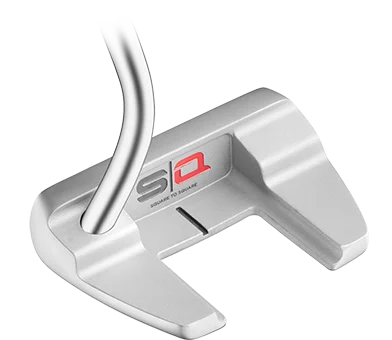Advertisement
A powerful and accurate golf swing is the foundation of a great game. Whether you’re a beginner or an experienced golfer, refining your stance, grip, and posture can significantly improve both your accuracy and distance. In this guide, we’ll break down expert-backed techniques to help you develop a more consistent and effective swing.
1. The Perfect Stance: Building a Solid Foundation
Your stance sets the tone for your entire swing. If your foundation is unstable, it can lead to inconsistent shots and a lack of control. Follow these key steps to establish a solid stance:
- Feet Positioning: Keep your feet shoulder-width apart to maintain balance. For shorter irons, bring them slightly closer together, and for drivers, widen them slightly to generate more power.
- Knee Flexion: A slight bend in your knees will help you stay athletically ready and improve your ability to shift weight during the swing.
- Weight Distribution: Evenly distribute your weight between both feet at address. As you swing, shift your weight naturally from your back foot to your front foot for better power and control.
A strong stance ensures that you remain balanced throughout your swing, leading to better ball contact and improved consistency.
2. The Right Grip: Controlling the Club for Accuracy
Your grip is one of the most critical elements of a great swing. A proper grip allows you to maintain control of the club while generating power. There are three primary grip styles:
- The Overlapping Grip: Used by most professional golfers, this grip involves placing the pinky finger of your trail hand (right hand for right-handed golfers) over the index finger of your lead hand.
- The Interlocking Grip: This grip locks the pinky and index fingers together, offering a firmer connection for players with smaller hands.
- The Ten-Finger Grip: Also called the “baseball grip,” this style provides more control for beginners but can sometimes limit wrist action.
Grip Pressure Matters – Holding the club too tightly can restrict wrist movement and reduce power. Aim for a grip pressure of 4-5 on a scale of 10, firm enough to control the club but relaxed enough to allow a natural swing.
3. Mastering Posture: Creating a Powerful and Consistent Swing
Posture plays a crucial role in generating clubhead speed and improving shot accuracy. Here’s how to perfect your setup:
- Spine Angle: Maintain a slight forward tilt from your hips, ensuring your back remains straight. This promotes a smooth rotation and prevents excessive movement.
- Arm Positioning: Let your arms hang naturally from your shoulders while keeping your elbows relaxed. Avoid excessive tension, as it can restrict your swing motion.
- Chin Position: Keep your chin slightly up to allow a full shoulder turn during your backswing. Tucking your chin too much can cause stiffness and restrict rotation.
A proper posture not only improves your swing mechanics but also reduces the risk of injury over time.
4. Swing Mechanics: Generating Power and Precision
To maximize both distance and accuracy, your swing should be a smooth and controlled motion rather than a rushed or forced effort. Key elements include:
- The Backswing: Start by turning your shoulders while keeping your arms extended. Your trail shoulder should move under your chin, creating a coil that stores power.
- The Downswing: Initiate your downswing with your hips and lower body, allowing your arms to follow naturally. This prevents over-the-top motions that lead to slicing.
- The Follow-Through: A complete follow-through ensures full energy transfer and balance. Your weight should be on your front foot, with your chest facing the target.
Practicing a fluid and connected swing will help you gain both distance and accuracy over time.
5. Common Swing Mistakes and How to Fix Them
Even skilled golfers make mistakes that can affect their swing. Here are a few common errors and how to correct them:
- Over-Swinging: Trying to hit the ball too hard can lead to a loss of control. Focus on smooth tempo rather than brute force.
- Early Wrist Release: Releasing your wrists too soon reduces power. Work on delaying your wrist action until impact for a stronger shot.
- Improper Weight Transfer: Staying on your back foot leads to weak shots. Ensure you shift your weight forward through impact for maximum energy transfer.
6. Practice Drills to Improve Your Swing
Improving your swing requires consistent practice. Here are a few drills to help:
- The Towel Drill: Place a towel under both armpits and take half-swings. This helps keep your arms and body connected, preventing excessive hand movement.
- The Alignment Stick Drill: Use an alignment stick to check your stance and swing path, ensuring you stay on the right track.
- The Slow-Motion Swing Drill: Practice your swing in slow motion to focus on proper sequencing and technique.
Conclusion: Elevate Your Game with Expert Techniques
Mastering your golf swing is a combination of perfecting your stance, grip, posture, and swing mechanics. By incorporating these expert-backed techniques into your practice routine, you’ll notice improvements in both accuracy and distance. Remember, consistency is key—small adjustments over time will lead to better ball control, more power, and lower scores on the course.
If you’re serious about refining your game, take the time to focus on fundamentals, practice regularly, and seek professional guidance when needed. With patience and dedication, you’ll be well on your way to mastering the perfect golf swing.












